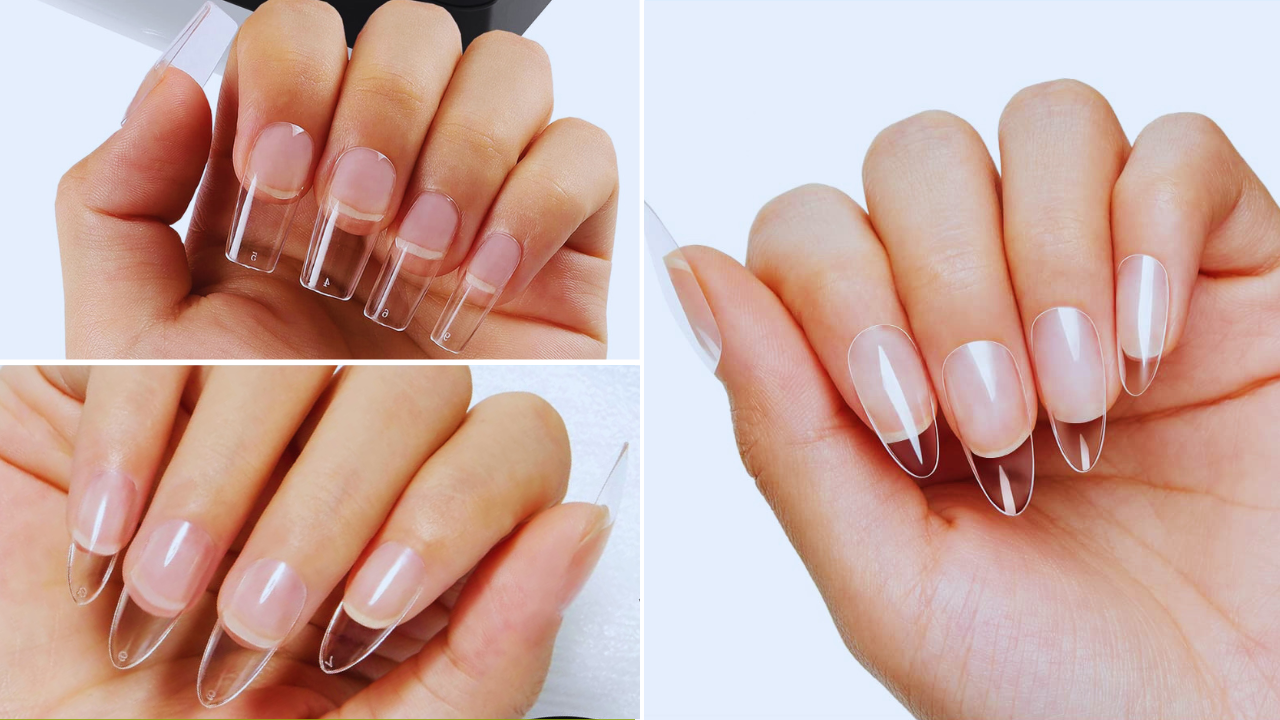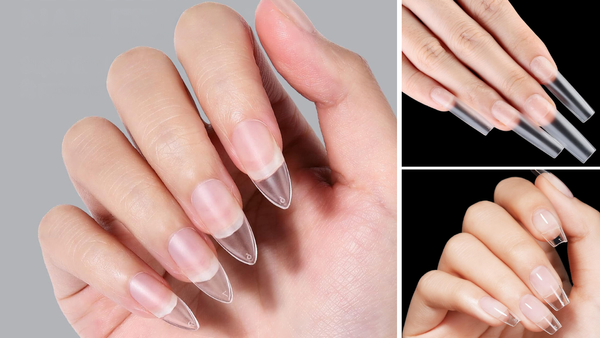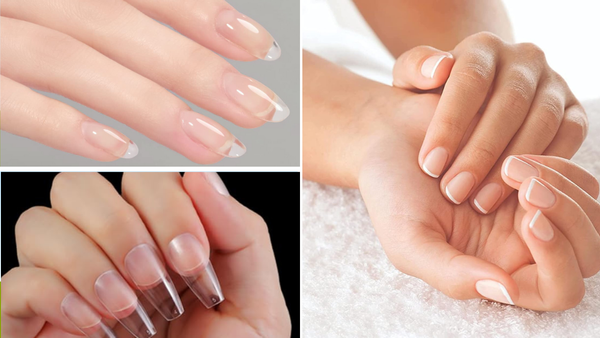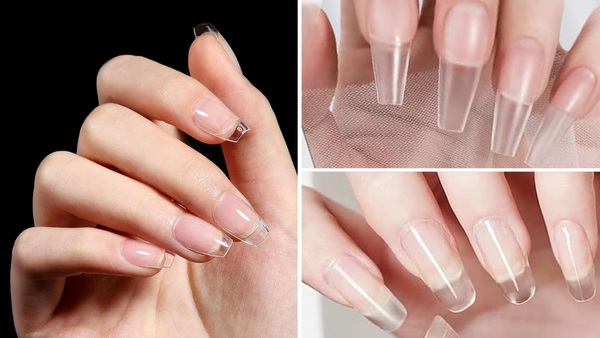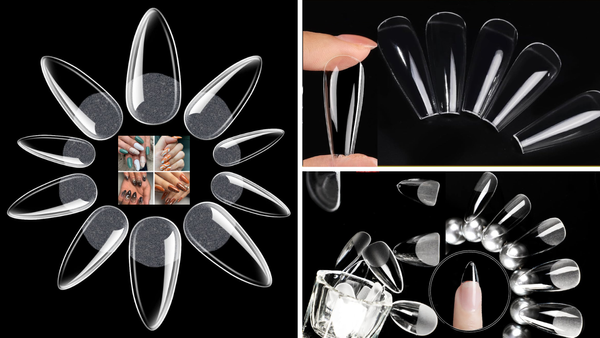Key Takeaways:
- The versatility of Clear Fake Nails: Clear fake nails can be painted with regular nail polish and gel polish, offering a customizable canvas for personal nail art.
- Preparation is Key: Proper preparation of the nail beds and application of base coats are crucial for achieving a smooth and durable finish.
- Maintenance Tips: Regular maintenance, including applying a top coat and using cuticle oil, can extend the life and look of painted clear fake nails.
Introduction to Painting Clear Fake Nails
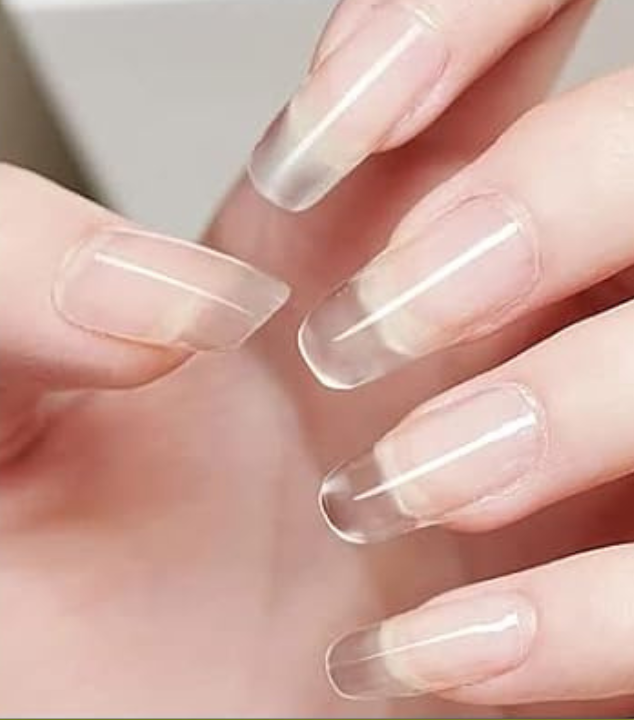
Clear fake nails, whether acrylics or press-ons, provide a versatile base for those exploring different nail art designs without committing to permanent changes to their natural nails. The question, "Can you paint clear fake nails?" is common among enthusiasts. The answer is a resounding yes, and this guide will walk you through the steps and tips to achieve a perfect manicure at home.
Choosing the Right Type of Fake Nails
Before diving into painting, it's important to choose the right type of clear fake nails. Acrylic nails and press-on nails are the most popular choices. Acrylic nails are applied using a mixture of liquid monomer and powder polymer that hardens when exposed to air, creating a strong layer over the natural nails. Press-on nails, on the other hand, are pre-shaped nails that can be glued directly onto your natural nail plate.
Preparing Your Nails
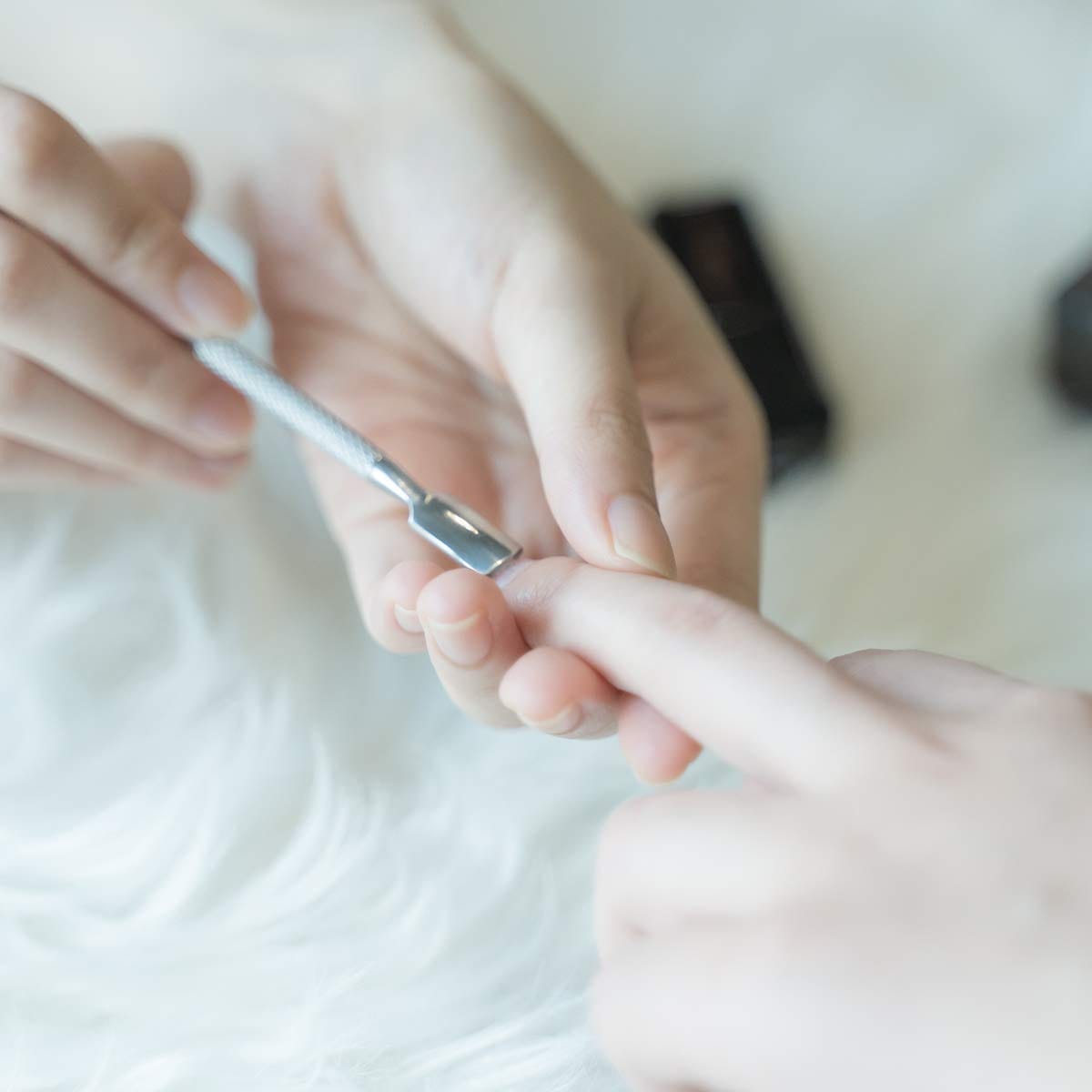
Proper nail preparation is crucial for the paint to adhere correctly and last longer. Clean your natural nails with soapy water to remove oils and debris. Next, gently push back the cuticles and buff the surface of the nails to create a slightly raised texture for better adhesion. Always remember to apply a thin layer of nail glue or base coat to protect the natural nails and enhance the longevity of the fake nails.
Selecting the Right Paint
When it comes to painting clear fake nails, you have the option to use regular nail polish or gel polish. Regular nail polish is easy to apply and remove, making it ideal for those who like to change their nail color frequently. Gel polish, however, will require an LED lamp to cure and is known for its durability and glossy finish.
Applying the Base Coat

Applying a base coat is an essential step in painting clear fake nails. The base coat helps to smooth any imperfections, prevents staining, and improves the adherence of the nail polish color. Allow the base coat to dry completely before proceeding to the next step.
Exploring Nail Art Techniques on Clear Fake Nails
When diving into the world of nail art on clear fake nails, the possibilities are virtually endless. Whether using acrylic nails or press-ons, the clear base acts as a blank canvas for your creativity. You can start by applying a thin layer of base coat to protect the nail plate and enhance the adhesion of the nail polish. Once that's dry, you can experiment with different nail art techniques. For instance, using a fine brush or a dotting tool, you can create intricate designs or patterns. If you're feeling adventurous, adding small embellishments like glitter or tiny rhinestones can elevate your nail art game to professional levels, making your nails a standout at any event.
Moreover, for those who prefer a minimalist approach, simply painting a fresh coat of vibrant polish color can make a significant impact. Consider using gel polish for its long-lasting finish and brilliant shine. To apply gel polish on acrylic or press-on nails, start with a clean surface by wiping the nails with a cotton swab dipped in alcohol. Apply the gel polish in a thin layer from the cuticle to the tip, curing under an LED lamp per the polish instructions. This method ensures your nail art remains pristine and chip-free for weeks, perfect for those who don't have the time for regular touch-ups. This approach not only enhances the beauty of clear fake nails but also ensures they complement your overall style and occasion.
Enhancing Durability: Best Practices for Long-Lasting Paint on Clear Fake Nails
When considering how to paint clear fake nails, durability is a key concern. To ensure that your nail polish remains vibrant and chip-free for as long as possible, apply a thin layer of base coat. This not only protects the nail but also provides a smooth canvas for the color. After painting, a top coat is crucial; it seals the color and adds a glossy finish. For those using acrylic nails, make sure the acrylic powder has bonded well with the liquid monomer before applying any polish. This ensures the base is solid and less prone to lifting or cracking.
For added longevity, especially when using regular nail polish on acrylics or press-ons, consider applying a fresh coat of top coat every few days. This practice helps to maintain the shine and protect the underlying color from daily wear and tear. If you frequently use your hands or are exposed to harsh chemicals, wearing gloves can provide an additional layer of protection. Remember, the key to long-lasting results on any artificial nails—whether acrylic or press-on—is the careful preparation of the nail bed and the quality of products used.
Exploring the Versatility of Nail Polish on Acrylic Press-Ons
When considering whether you can paint clear fake nails, particularly acrylic press-ons, the versatility of nail polish plays a pivotal role. Acrylic nails, known for their durability and strength, provide an excellent canvas for regular nail polish and gel polish. This flexibility allows frequent color changes to match outfits or occasions without visiting a nail salon. By applying a base coat first, you ensure that the polish adheres well and remains vibrant. Whether you're using a bold polish color or a subtle shade, the process enhances the beauty of acrylic press-ons, making them a popular choice for those who enjoy regular style updates.
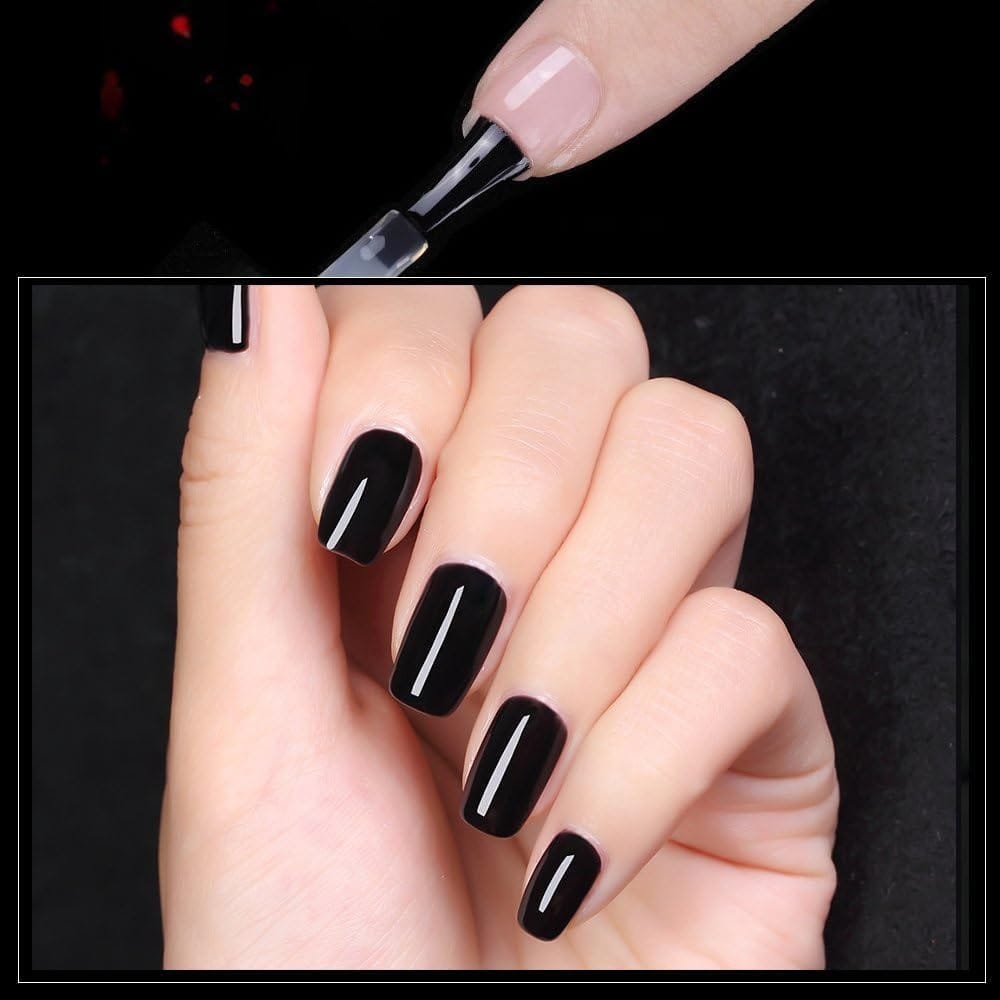
Moreover, painting acrylic press-ons is straightforward and can be done at home, saving time and money. Start by ensuring the nails are completely dry and free from old polish. Apply a thin layer of base coat to protect the nail plate and follow up with your chosen polish color. For a flawless finish, apply a top coat after the color has dried completely. This not only adds a glossy sheen but also extends the wear of the nail polish. With proper application, painted acrylic press-ons can last several weeks, making them a practical option for extended wear.
Exploring the Impact of Nail Shape on Paint Adhesion
When considering whether you can paint clear fake nails, the shape of the nails plays a pivotal role in how well the paint adheres and appears. For instance, nails with a slightly raised or curved surface can hold nail polish better, allowing for a smoother application and reducing the likelihood of chipping. Whether using regular nail polish or gel polish on acrylic nails, preparing the nail surface according to its shape ensures better adhesion. This involves gently buffing the nail plate to create a slightly textured surface, which helps the polish cling more effectively.
Moreover, the length and contour of the nails can influence the drying process. Longer nails or those with intricate designs might require additional time to dry completely, especially when applying multiple layers like a base coat, color, and top coat. An LED lamp can expedite this process, ensuring each layer cures properly and achieves a durable finish. Remember, the ultimate goal is to achieve a perfect manicure that not only looks great but also lasts longer without lifting or peeling off prematurely.
The Role of Nail Preparation in Enhancing Paint Longevity on Acrylic Nails
Before you start painting press-on nails or acrylics, it's crucial to ensure the nails are completely clean and free from any old polish, oils, or debris. This can be achieved by wiping the nails with a cotton swab dipped in soapy water or using a specialized nail prep cleanser. Such thorough cleaning removes any barriers that might prevent the nail polish from adhering properly, thereby enhancing the longevity of your nail art. It's also advisable to apply a thin layer of cuticle oil to the nail beds and surrounding skin to protect them during the painting process.
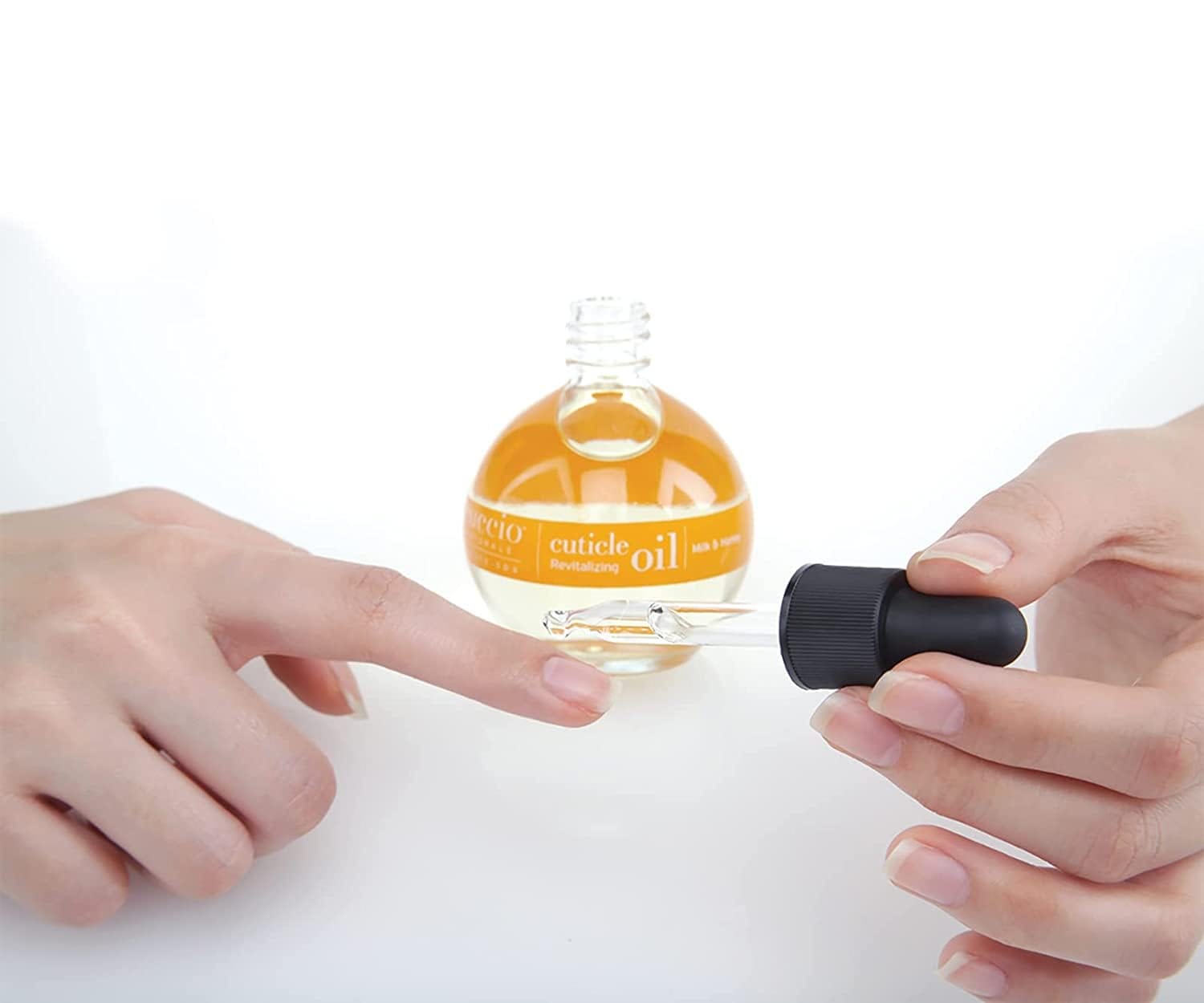
Additionally, using the right type of nail glue and applying it correctly can significantly affect how long your painted nails last. For the best results, apply a thin, even layer of glue over the natural nail and press the acrylic nail down firmly. Allow the glue to dry completely before starting to paint. This not only ensures that the acrylic nails are securely attached but also creates a stable foundation for applying nail polish. Whether aiming for a subtle natural look or vibrant nail art, starting with a well-prepared nail is key to achieving and maintaining a beautiful result.
Maintenance Techniques for Painted Acrylic Nails
Maintaining painted acrylic nails requires attention to detail to ensure they look fresh and last long. Regular application of cuticle oil can keep the nail beds healthy and enhance the overall appearance of the nails. It's important to wear gloves while doing household chores or using harsh chemicals to prevent the polish from chipping or peeling. Additionally, using a top coat every few days can help seal the polish and prevent wear, keeping your nails looking salon-fresh. This routine maintenance helps extend the life of your painted acrylic nails, making them a durable and attractive option for everyday wear and special occasions.
Another crucial aspect of maintaining painted acrylic nails is safely removing polish. Instead of peeling or scraping the polish off, which can damage the acrylic surface, use a gentle nail polish remover. Soak a cotton swab in the remover and hold it against the nail for a few seconds to allow the polish to dissolve. This method ensures that the acrylic nails remain intact and can be repainted if desired. Regular maintenance not only keeps the nails looking their best but also protects the natural nails underneath, promoting better nail health and adhesion for future applications of polish or acrylics.
Maintenance Tips for Painted Clear Fake Nails
Maintaining the pristine look of painted clear fake nails requires some care and attention, but it's well worth the effort for the lasting beauty it provides. After painting and completely drying your nails, applying a top coat can seal in color and protect your nail art from peeling or chipping. It's advisable to reapply a thin layer of top coat every few days to maintain the gloss and extend the life of the paint. Additionally, wearing gloves while doing household chores or using harsh chemicals can prevent premature wear and tear on your nail polish.
Furthermore, keeping your nails and cuticles well-moisturized is crucial for maintaining the health of your natural nails underneath the fake ones. Regularly applying cuticle oil can keep the skin around your nails supple and prevent hangnails. If you need to change the color or correct a mistake, safely remove the old polish using a non-acetone remover to avoid damaging the acrylic or press-on nail. Soak a cotton swab in the remover, press it onto the nail for a few seconds, and gently wipe away the polish. This method minimizes exposure to harsh chemicals, keeping both your natural and artificial nails looking healthy and vibrant.
Painting the First Coat
When applying nail polish, start with a thin first coat. Use just enough polish on the brush to cover the nail in three strokes: one down the middle and one on each side. This method helps prevent the polish from pooling and ensures even coverage. Allow the first coat to dry completely before applying the second coat.
Adding a Second Coat
A second coat of nail polish is necessary to achieve a uniform and saturated color. Follow the same application method as the first coat, ensuring each layer is completely dry to avoid smudging or dragging the color.
Finishing with a Top Coat
To seal in the color and add a glossy finish, apply a clear top coat over the painted nails. The top coat not only enhances the appearance but also protects the polish from chipping and extends the wear of your manicure.
Maintenance and Care
Maintaining your painted clear fake nails involves regular touch-ups and nail care routines. Apply a new coat of top coat every few days to keep the shine and protect the color. Use cuticle oil daily to keep the nail beds moisturized and promote healthy nail growth.
Removing Paint from Fake Nails

When you're ready to change your nail color, it's important to remove the old polish safely. For regular nail polish, use a non-acetone remover and a cotton swab to gently wipe away the polish. For gel polish, you'll need to soak the nails in acetone and gently scrape off the loosened polish with a cuticle pusher.
Summary
Painting clear fake nails is a fun and creative way to express your style without damaging your natural nails. Following the proper steps for preparation, application, and maintenance, you can achieve a salon-quality manicure at home. Whether you choose regular nail polish for convenience or gel polish for its durability, the possibilities are endless.
FAQ Section
Can I use any nail polish on clear fake nails?
Yes, you can use regular nail polish and gel polish on clear fake nails. Just ensure that you use a base coat and top coat to protect the nails and extend the wear of the polish.
How often should I repaint my clear fake nails?
The frequency of repainting depends on the growth of your natural nails and the wear of the polish. Typically, a fresh coat every two weeks keeps your nails looking their best.
Is it necessary to use a top coat on painted clear fake nails?
Yes, applying a top coat is crucial. It seals the color, adds a glossy finish, and protects the polish from chipping, extending the life of your manicure.
